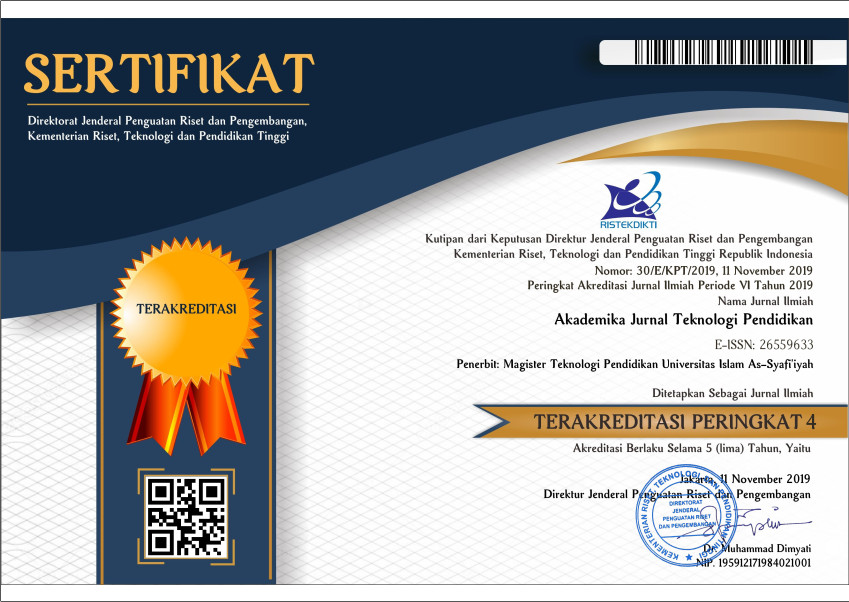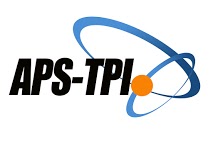EVALUATION OF EDUCATION PROGRAM IMPLEMENTATION SCIENCE-BASED MADRASAH ALIYAH
Abstract
Abstract:This research aims to evaluate the SAIN-based Madrasah Aliyah (MA) education program in Brebes, Central Java. The education program aims to improve the competence of human resources in improving ability. The evaluation model used in this study is the CIPP model (context, input, process, and product) of the qualitative research approach model introduced by Stufflebeam. The results showed that madrasah sains education program has been running well in accordance with the educational program that has been compiled. However, in the implementation of Madrasah SAIN education, there are still some shortcomings both in the field of funding (low teacher incentives), facilities and infrastructure (there are no adequate laboratories) and about the development of low human resources competencies of teachers.
References
Daniel L. Stufflebeam, Lori A Wingate, and Thomas Kellagen,. International Handbook of Educational Evaluation Part One: Perspectives (London: Kluwer Academic Publisher, 2013).
Miles, Mathew B. Dan A. Michael Huberman, Translator, Tjejep Rohendi Rosidi. Qualitative Data Analysis (Jakarta: University of Indonesia, UI Press, 1992).
A. Fauzi, Ikka Kartika, Managing Participatory Training (Bandung: Alfabeta, 2011).
Alkin, Marvin C. (Ed). 2004. Evaluation Roots: Tracing Theorists' Views and Influences. Califrnia, London, N ew Delhi: Sage Publications.
Stufflebeam, Daniel L. and Anthony J. Shinkfield. 2007. Evaluation Theory, Models, and Aplications. San Francisco: Jossey-Bass A Wiley Imprint.
Fitzpatrick, Jody L., James R. Sanders, and Blaine R. Worthen. 2004. Evaluation Program: Alternative Approaches and Practical Guidelines, Third Edition. Boston: Pearsn Education.
Tiedao Zhang and Zhao Minxia, 2006. Universalizing Nine-Year Compulsory Education for Poverty Reduction in Rural China. Source: International Review of Education/Internationale Zeitschrift für Erziehungswissenschaft/Revue Internationale de l'Education, Vol. 52, No. 3/4, Education and Poverty Reduction (May, 2006), pp. 261-286 Published by: Springer Stable URL: http://www.jstor.org/stable/29737080
Cristovam Buarque, Vida A. Mohorčič Špolar and Tiedao Zhang, 2006. Introduction: Education and Poverty Reduction. Source: International Review of Education / Internationale Zeitschrift für Erziehungswissenschaft / Revue Internationale de l'Education, Vol. 52, No. 3/4, Education and Poverty Reduction (May, 2006), pp. 219-229 Published by: SpringerStable URL: http:// www. jstor.org/stable/29737077.
Azra, Azyumardi. 2012. Islamic Education: Tradition and Modernization amid the Challenges of Millennium III. Jakarta: Kencana Prenada Media Group.
Suharsimi Arikunto and Cepi Safruddin Abdul Jabar, Evaluation of Education Program, Practical Theoretical Guidelines for Students and Educational Practitioners (Jakarta: Bumi Aksara, 2004).
Stufflebeam, D.L. The Relevance of the CIPP Evaluation Model for Educational Accountability, Paper presented at the Annual meeting of the American Association of School Administrators, (Atlantic City, N.J., February 24, 1971)
Thomas Kellagen, Daniel L. Stufflebeam and Lori A Wingate. International Handbook of Educational Evaluation Part One: Perspectives (London: Kluwer Academic Publisher, 2013).
This work is licensed under a Creative Commons Attribution 4.0 International License.
Authors who publish with this journal agree to the following terms:
- Authors retain copyright and grant the journal right of first publication with the work simultaneously licensed under a Creative Commons Attribution License that allows others to share the work with an acknowledgement of the work's authorship and initial publication in this journal.
- Authors are able to enter into separate, additional contractual arrangements for the non-exclusive distribution of the journal's published version of the work (e.g., post it to an institutional repository or publish it in a book), with an acknowledgement of its initial publication in this journal.
- Authors are permitted and encouraged to post their work online (e.g., in institutional repositories or on their website) prior to and during the submission process, as it can lead to productive exchanges, as well as earlier and greater citation of published work (See The Effect of Open Access).









